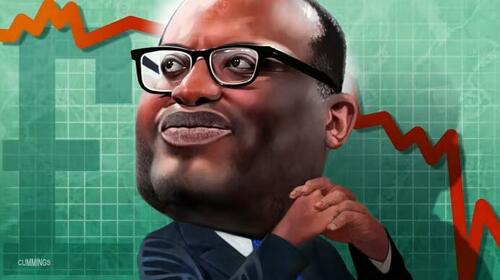Low Rates And Leverage Set Kwarteng Up For A Massive Jolt
By Ven Ram, Bloomberg Markets Live reporter and strategist
Who’s to blame for all the turmoil in the UK’s financial markets?
While the popular refrain pins the blame on Downing Street, a careful scrutiny of the events of the past few days will show that Chancellor Kwasi Kwarteng just stepped on a land mine that had been long planted.
Here’s why:
At the heart of current turmoil sweeping through the markets is the recent surge in gilt yields, particularly at the long end. For instance, the yield on 30-year gilts surged more than 100 basis points in the space of just a couple of days after Kwarteng unveiled his now-notorious “mini budget” — almost three times the increase that we saw in the whole of 2021.
Many in the market were at a loss to explain the fierce selloff, especially considering that Prime Minister Liz Truss had flagged much of what was to come in Kwarteng’s blueprint in the run-up to the Tory leadership election. And therein lies the rub.
To understand what was really at work, an explanation of liability-driven investments (LDI) may be useful. Typically, pension funds and life insurers owe their beneficiaries promised sums in the future, which represent a “liability” on their books. For this given level of liability, they manage the assets, which range from bonds to stocks and everything in between. Since government bonds are considered the safest assets, it shouldn’t be surprising that LDI funds typically hold bonds by the dozen.
Before 2022, interest rates around the globe were extremely low or even negative, which posed a huge problem for LDI funds. That’s because as rates fell, a key metric that LDI investors use — known as the funding ratio — fell way below 1.
(If assets match liabilities, the ratio would be one, meaning the LDI is fully funded. A ratio below 1 would mean underfunding).
Low interest rates meant that the fair value of liabilities that were due in the future were extremely high. So the typical pension fund didn’t have enough assets in its portfolio to match its liabilities (a sum of £1,000,000 discounted at, say, 5% may be valued at just £20 million, which will surge to £50 million when rates fall to 2%).
A typical pension fund would find it hard to match the valuation of its liabilities with equivalent assets when yields plunge that low, and that was the state of play for much of the period between the global financial crisis and the pandemic.
In order to keep the funding ratio on an even keel, LDIs turned to derivatives.
Typically, these take the form of an interest-rate swap, and someone who opts to “receive” a fixed-rate swap will face losses as interest rates rise. When rates shot through the roof late last month by a whole lot and all of a sudden, LDIs holding those derivatives had to post collateral.
As Allison Schrager puts it, the logistical challenge of coming up with enough collateral so fast made it impossible.
Soon, chaos ensued, and the Bank of England had to step in to buy long-dated gilts — even if only temporarily.
Clearly, years of low interest rates forced LDIs to seek refuge in leveraged derivatives. Together, those two factors proved to be a combustible combination, one which was poised to blow up some day. Kwarteng just provided the spark.
Tyler Durden
Tue, 10/04/2022 – 10:41

